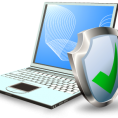Seemingly overnight, technology has become as much a part of childhood as cartoons, camp, and playing outside. Already, it’s difficult to imagine a life without devices such as the iPad, which was first announced by Apple in early 2010. Connectivity and high-tech usage is quickly proliferating and evolving, and it’s being ingrained into children’s vernacular from the youngest age, something we learned while researching our recent bestselling book Parenting High-Tech Kids: The Ultimate Internet, Web, and Online Safety Guide.
As we discussed part one of our new online series on kids and tech though, one thing remains constant across the full range of connected devices: Parents must remain vigilant where the Internet and access to online content consumption and sharing are concerned. Every child will use each device uniquely, and all will invariably encounter questionable content – through ongoing education, hands-on instruction and leading by example, parents must strive to teach online safety essentials and positive computing habits.
On the bright side, the Internet is, in and of itself, simply a tabula rasa – and one, which can be used to your family’s tremendous benefit. “Technology is not inherently good or bad… only the way in which we choose to use it,” explains Web Wise Kids president Judi Warren. As parents, we need to empower kids to take advantage of the enormous opportunity that today’s connected world provides them, while simultaneously doing our best to teach best practices as relate to online behavior, information sharing and product usage.
There are now a multitude of options available for kids and families to connect online, including desktop and laptop PCs.
It used to be noteworthy that many families had their own home computer, and something of a major event when a new PC was purchased by each household. (And still remains so for many homes, as there’s nothing more exciting for children than ripping the plastic, cardboard, and Styrofoam off a shiny new system.) However, these days, thanks to declining hardware prices and booming interest in smartphones, tablet PCs and other mobile devices, the humble PC has become a growingly commoditized and often secondary way to access the Internet for many individuals. A whopping 97% of families with parents who went to college now own a computer though, and in fact the average household now contains two, according to the Kaiser Family Foundation.
To date, one of the best tips experts have offered for keeping kids safe online is to make sure that home computers are placed in common areas such as playrooms and dens, and to confine Internet access and online-connected activities to within these shared environments. The process effectively allows you to not only monitor children’s computing habits, but also favorite sites, software and services; how and when they access them; types of media consumed and in which fashion; the length of online sessions; and whom children interact with online and the nature of these interactions. But as Symantec Internet Safety Advocate Marian Merritt points out, the notion of attempting to keep computer usage confined to shared family spaces is quickly becoming antiquated.
“As media consumption goes more mobile, the idea that everyone is computing while sitting at the kitchen table is foolish,” she explains. Consider one recent study from online monitoring service SocialShield. Based on its findings, while two-thirds of parents report that kids access social networks from the family computer, nearly 90% say they’re also accessing them from their own computers – and smartphones, tablet PCs, iPods, school computers, or friend’s houses as well.
Laptops are likewise portable by nature, and connected cell phones even more so, meaning that simply defaulting to public placement of high-tech access points is no longer always an effective deterrent to engaging in unproductive or negative computing behaviors. As such, it’s important to recognize that while it’s still wise to encourage your family to keep their high-tech activities out in the open, especially when using a computer, there’s more to the story today when it comes to keeping kids safe on computers. With just a few of the many potential options for connectivity offered by today’s PCs including web browsing, email, instant messaging, social networks, downloadable apps and programs, location-based services, and online multimedia sharing, it’s imperative to protect your children on these systems, which we’ll discuss in later articles.
To find out more about how to keep kids safe online, protect children’s privacy, and raise responsible digital citizens, also be sure to check out the bestselling book that started it all, Parenting High-Tech Kids: The Ultimate Internet, Web, and Online Safety Guide.














